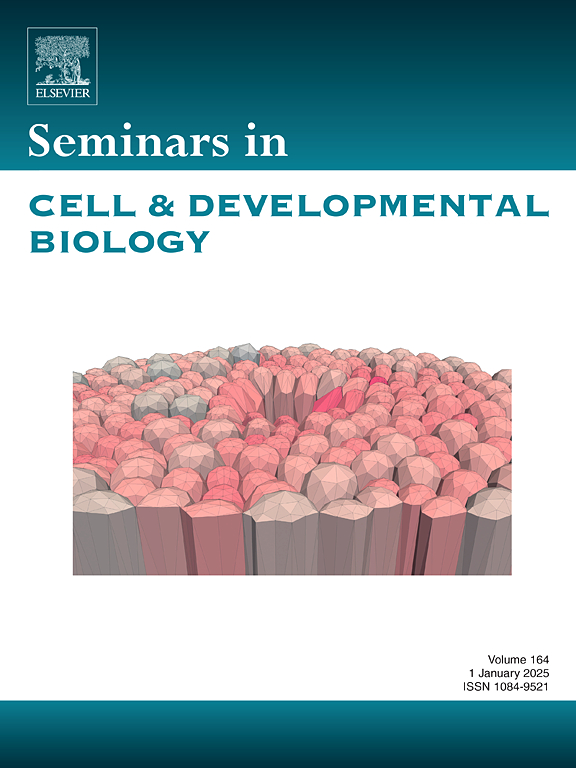应对不确定性:动态组织中稳健模式形成的挑战
IF 6
2区 生物学
Q1 CELL BIOLOGY
引用次数: 0
摘要
生物学中一个突出的问题是组织模式是如何在发育过程中出现的。位置信息的概念,假设形态因子的梯度以浓度依赖的方式指导细胞命运,已经成为理解模式形成的一个有影响力的框架。然而,最近的研究强调,发育中的组织是高度动态的,细胞运动是由局部机械波动或整体形态发生力量引起的,这往往与形态发生信号和细胞命运规范相吻合。这就要求通过明确地研究信号、细胞命运和形态发生之间的相互作用,对模式形成有更动态的理解。在这篇综述中,我们首先讨论了关于细胞运动在调节信号剂量和细胞命运获取中的作用的新证据。然后,我们研究了发展组织所采用的生物物理策略,尽管正在进行的细胞动力学和大规模形态发生,但仍能实现稳健的模式。虽然细胞运动可能被直观地视为破坏模式程序,但最近的证据表明,当与细胞命运相结合时,它们可以作为在发育过程中产生和稳定精确组织模式的关键机制。本文章由计算机程序翻译,如有差异,请以英文原文为准。
Coping with uncertainty: Challenges for robust pattern formation in dynamical tissues
An outstanding question in biology is how tissue patterning emerges during development. The concept of positional information, which posits that gradients of morphogens instruct cell fate in a concentration-dependent manner, has been an influential framework to understand pattern formation. Recent studies, however, highlight that developing tissues are highly dynamic, with cellular movements, arising from local mechanical fluctuations or global morphogenetic forces, that often coincide with morphogen signaling and cell fate specification. This calls for a more dynamic understanding of pattern formation by explicitly investigating the interplay between signaling, cell fate and morphogenesis. In this review, we first discuss emerging evidence on the role of cellular movements in modulating signaling dosage and cell fate acquisition. We then examine the biophysical strategies employed by developing tissues to achieve robust patterning despite ongoing cellular dynamics and large-scale morphogenesis. While cellular movements may intuitively be viewed as disruptive to patterning programs, recent evidence suggests that when coupled with cell fate, they can act as a critical mechanism for generating and stabilizing precise tissue patterns during development.
求助全文
通过发布文献求助,成功后即可免费获取论文全文。
去求助
来源期刊
CiteScore
15.10
自引率
1.40%
发文量
310
审稿时长
9.1 weeks
期刊介绍:
Seminars in Cell and Developmental Biology is a review journal dedicated to keeping scientists informed of developments in the field of molecular cell and developmental biology, on a topic by topic basis. Each issue is thematic in approach, devoted to an important topic of interest to cell and developmental biologists, focusing on the latest advances and their specific implications.
The aim of each issue is to provide a coordinated, readable, and lively review of a selected area, published rapidly to ensure currency.

 求助内容:
求助内容: 应助结果提醒方式:
应助结果提醒方式:


